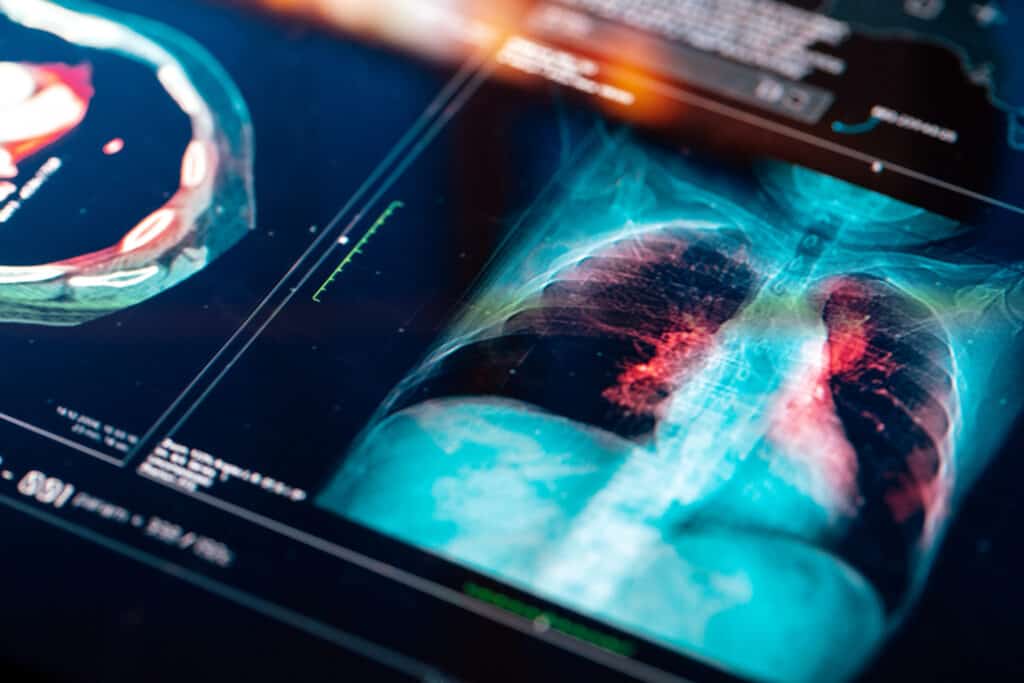UAMS Contributes to Groundbreaking Lung Cancer Clinical Trial
| The long-awaited results of a 10-year lung cancer clinical trial that UAMS contributed to were recently published in the New England Journal of Medicine.
UAMS was one of 83 centers in the United States, Canada and Australia that participated in the National Cancer Institute-funded trial that showed patients with early-stage lung cancer can be treated with sublobar resection as an alternative to the more aggressive lobectomy surgery.
“We are always looking for ways to make lung cancer surgery safer and less invasive,” said Matthew Steliga, M.D., chief of thoracic surgery at UAMS and one of 125 surgeons allowed to enroll patients in the Phase 3 study. “Until now, the standard of care for early lung cancer was to remove the whole lobe so we could get the lymph nodes and the roots of that part of the lung. It was the only proven way we could get all the cancer.”
A 1995 study by the Lung Cancer Study Group reported that local recurrence was three times as high with sublobar resection as with lobectomy and lung cancer-related mortality was 50% higher with sublobar resection. These results established lobectomy as the standard of surgical care for patients with new, early-stage non-small cell lung cancer.
Lung cancer is the leading cause of cancer deaths in Arkansas, more than breast, colon and prostate cancer combined.
Advances in imaging and staging methods have allowed physicians to detect smaller tumors in the lung earlier, so sublobar resection needed to be studied again.
A sublobar resection involves removing only a small wedge of the lung, or a segment known as a segmentectomy. Only patients with primary lung cancer where the cancer is present in the lung and nowhere else in the body are eligible for the less aggressive surgery.
“We know that we can get a good outcome for very select patients without taking out the whole lobe now,” said Steliga. “Instead, we remove smaller, more select blood vessels and preserve what’s left of the healthy lung tissue. This could improve pulmonary function and overall quality of life for the patient.”
A leader in robotic surgery, UAMS already performs the minimally invasive lobectomy for patients with advanced lung cancer. Sublobar resection is not a new surgical technique for UAMS thoracic surgeons. The technique has also been performed on patients with limited pulmonary function who are too fragile for a lobectomy.
As lung cancer often does not show symptoms until more advanced stages, low dose CT screening is currently the only method of detecting early-stage lung cancer — the only stage in which patients have the sublobar resection option.
“For such a prevalent cancer, lung cancer screening is underutilized compared to mammography, which has been around for decades,” said Steliga. “Other cancers are caught early with great treatment options. Most people who are eligible for lung cancer screening don’t get screened.”
Adults ages 50 to 80 with who have smoked a pack a day for the last 20 years or two packs a day for 10 years are eligible for lung cancer screening, which is also offered at UAMS along with a comprehensive smoking cessation program.
While smoking is the primary risk factor for lung cancer, so is age.
“We know that a good number of people with lung cancer have not smoked,” said Steliga. “As we get older, tumors can generate due to the wear and tear on our bodies.”
That’s why Steliga is involved in an effort at UAMS to find better ways to detect lung cancer besides X-rays.
Referred to as liquid biopsy, Steliga works closely with Donald Johann Jr., M.D., a UAMS Biomedical Informatics professor and federally funded cancer researcher, to collect and study blood samples of UAMS patients with lung cancer to find circulating tumor DNA, a common biomarker for cancer.
“Dr. Johann is a leader in the country in blood test detection of lung cancer. It’s still in the research phase, and it will take years to mature into a fully validated test, but someday we may be able to determine if a person’s cancer has returned from a simple blood test.”
“It’s incredible, groundbreaking research,” said Steliga. “Someday, patients will ask how their blood work looks instead of their X-rays.”
